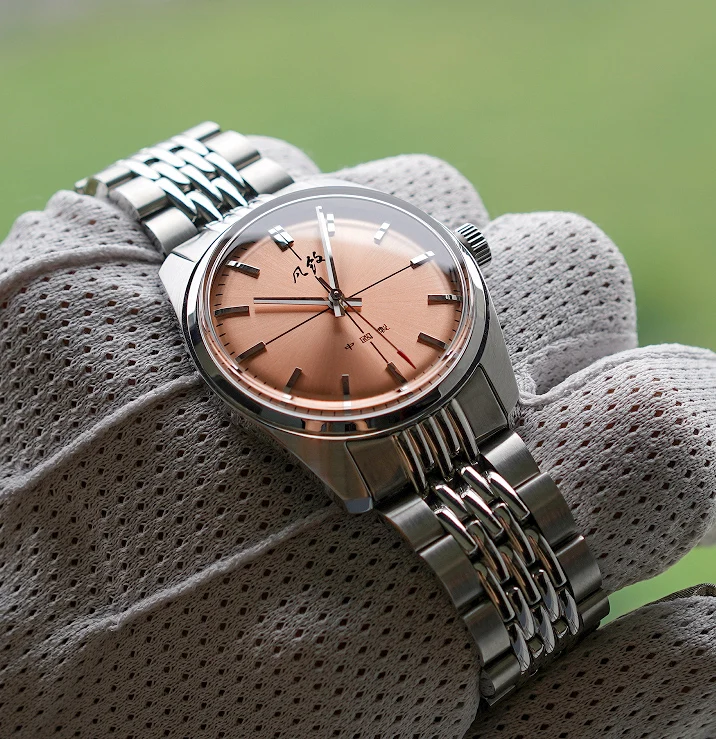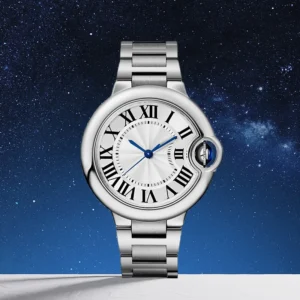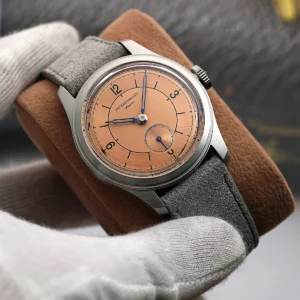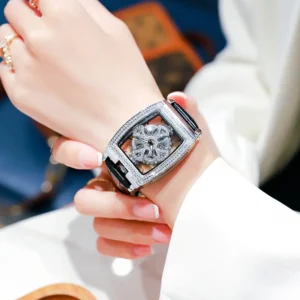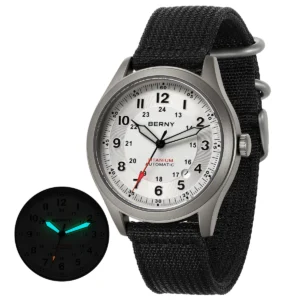Introduction: The Rise of Ultra-Slim Watchmaking
In the world of horology, few achievements demonstrate technical mastery quite like the ultra-slim watch. These marvels of engineering—typically measuring under 8mm in total case thickness—represent the pinnacle of watchmaking precision, where every tenth of a millimeter matters. Once primarily the domain of formal dress watches, thin timepieces have experienced a remarkable renaissance in recent years, captivating collectors and casual enthusiasts alike.
The pursuit of thinness in watchmaking has deep historical roots. For centuries, the ability to create increasingly slender pocket watches and, later, wristwatches served as a testament to a watchmaker’s skill. Today, this tradition continues with renewed vigor as brands compete to push the boundaries of what’s technically possible, regularly announcing record-breaking slim designs that seem to defy physics.
What makes this resurgence particularly fascinating is how it aligns with contemporary preferences for refined aesthetics and versatile elegance. The growing popularity of minimalist design principles has created fertile ground for thin watches to flourish beyond formal occasions, finding their place in everyday wardrobes.
The evolution of thin case design in modern watches represents a fascinating intersection of heritage and innovation. While maintaining traditional silhouettes that have proven timeless, contemporary watchmakers are revolutionizing what lies beneath these graceful exteriors. Understanding the differences between thin and thick watch cases helps appreciate the engineering challenges involved in creating these slender timepieces.
Let’s explore the current design trends, technological breakthroughs, and cultural significance driving the thin watch renaissance, examining how watchmakers are achieving new standards of elegance without sacrificing functionality.
Current Design Aesthetics in Thin Watch Profiles
Today’s ultra-thin watches showcase a remarkable diversity of design approaches while maintaining their slender proportions. Several distinct aesthetic directions have emerged to define the modern thin watch landscape:
The predominant design philosophy balances minimalism with subtle complexity. Where thin watches once relied primarily on their slimness as their defining feature, contemporary models incorporate sophisticated details that reward closer inspection. Many of these watches employ:
- Sunburst dial finishes that create dynamic play with light
- Intricate guilloche patterns offering texture without bulk
- Multi-level dials that create depth within minimal space
- Applied indices that add dimension while maintaining clean proportions
- Faceted hands that reflect light from multiple angles
Color trends in thin watches have expanded beyond traditional silver and black dials. Deep blues with sunburst finishing have become particularly prominent, while salmon-colored dials offer a distinctive vintage flair reinterpreted for modern tastes. Monochromatic schemes with subtle tone-on-tone elements provide sophistication without visual clutter.
Case shapes have evolved beyond purely round profiles, with cushion cases, tonneau shapes, and even geometric designs appearing in ultra-thin formats. What’s particularly notable is how modern thin watches integrate case and bracelet designs, creating flowing lines that enhance the overall slim profile rather than treating them as separate elements.
The design evolution of formal watch styles has significantly influenced thin watch aesthetics. Many contemporary pieces draw inspiration from mid-century minimalist watches while incorporating modern finishing techniques and materials. This heritage-inspired approach, combined with cutting-edge engineering, creates timepieces that feel both timeless and thoroughly contemporary.
The diversity of visual styles in mechanical watches allows thin profiles to serve various taste preferences while maintaining their characteristic sleekness. From the ruthlessly minimal to the subtly ornate, thin watches have transcended their traditional role as purely formal accessories.
The Engineering Marvel: How Modern Thin Watches Work
Creating an ultra-thin watch presents a fascinating engineering puzzle. The fundamental challenge is obvious yet profound: how to fit all necessary components into an increasingly restricted space while ensuring reliable performance. This challenge drives some of the most innovative thinking in the watch industry.
At the heart of any thin mechanical watch is its movement—the engine that powers timekeeping functions. Traditional watch movements stack components vertically, but ultra-thin calibers require radical rethinking of this architecture. Modern thin movements often employ these innovative approaches:
- Elimination of the central bridge, replacing it with several smaller bridges
- Integration of the mainplate and case back as a single component
- Peripheral winding systems that move the oscillating weight to the perimeter
- Micro-rotors that sit on the same level as other movement components rather than on top
- Hollowed-out bridges and plates that maintain strength while reducing thickness
- Redesigned gear trains with reduced heights for individual wheels
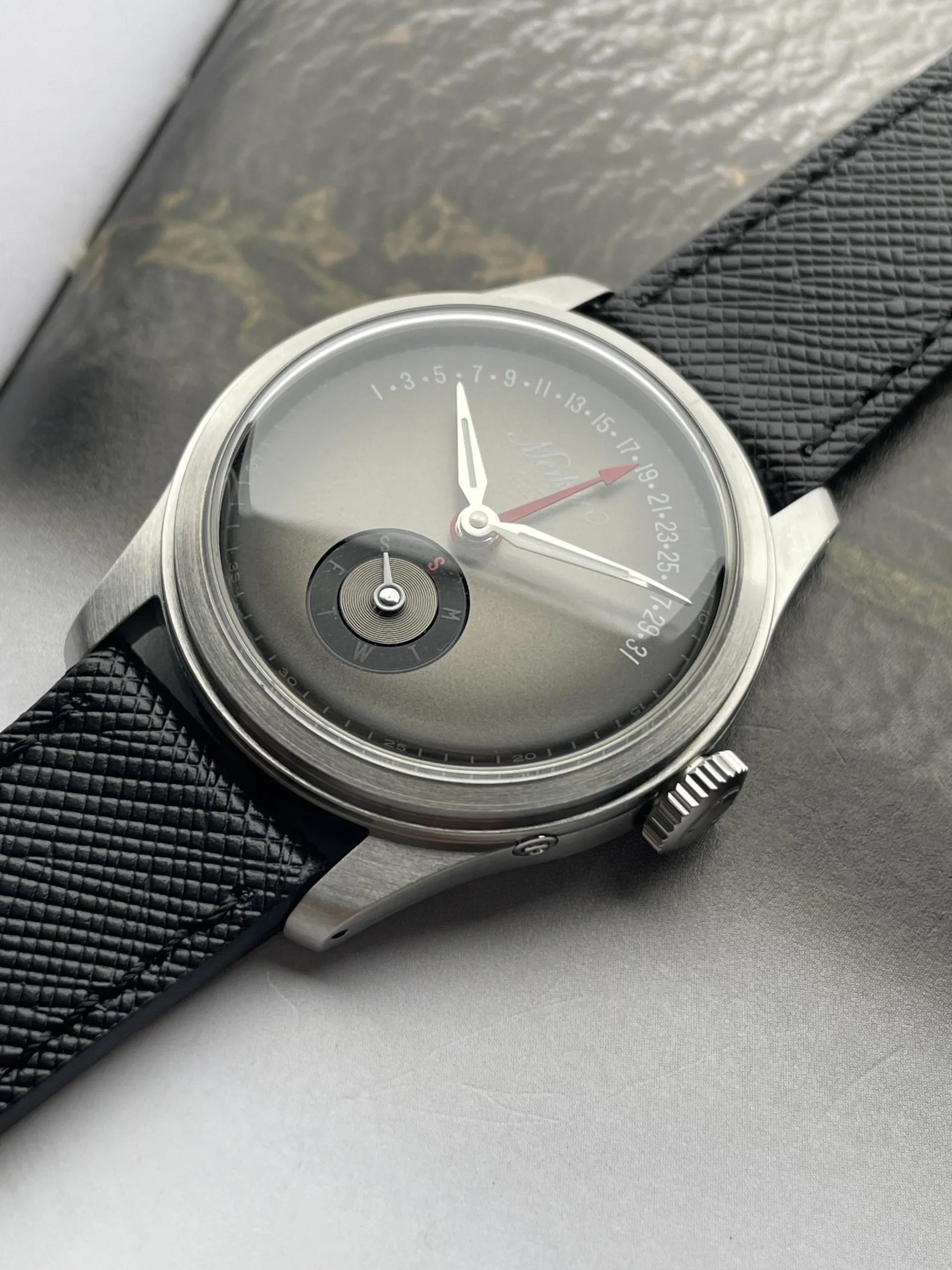
Perhaps the most remarkable innovation in recent years has been the integration of case and movement components. In traditional watchmaking, these are distinct entities, but several ultra-thin watches now use the caseback as the movement mainplate or integrate components of complications directly into the case structure. This approach eliminates redundant layers, saving precious millimeters.
The engineering behind slim watch movements represents horological ingenuity at its finest. Every component must be reconsidered, often requiring specialized manufacturing techniques to produce parts that are sometimes mere fractions of a millimeter thick.
Despite these achievements, creating ultra-thin watches inevitably involves certain compromises. Water resistance typically decreases as cases become thinner, and some robustness may be sacrificed for slenderness. However, modern materials and clever engineering solutions are increasingly mitigating these traditional limitations, as watchmakers tackle the design challenges involved in creating precision instruments with such tight constraints.
Material Science: The Foundation of Modern Thin Watches
Advanced materials have revolutionized what’s possible in thin watch construction. While traditional watchmaking relied primarily on brass, steel, and gold, today’s ultra-slim timepieces incorporate a diverse array of cutting-edge materials selected precisely for their ability to maintain strength despite minimal thickness.
Key materials enabling thinner watch profiles include:
- High-tech ceramic composites offering exceptional hardness with reduced weight
- Grade 5 titanium providing strength comparable to steel at roughly half the weight
- Carbon fiber composites delivering rigidity with minimal mass
- Silicon components eliminating the need for lubricant in certain movement parts
- Specialized alloys developed specifically for watchmaking applications
The crystal—the transparent covering protecting the dial—has also benefited from material advances. Modern sapphire crystals can be produced with increasingly thin profiles while maintaining scratch resistance and clarity. Some manufacturers have developed specialized treatments that allow for thinner crystals without compromising structural integrity.
Case construction has similarly evolved through material innovation. Modern thin watches often employ a “sandwich” construction with different materials serving specific functions: harder materials for external surfaces exposed to wear, and lighter or more malleable materials for internal components where weight or forming capabilities are more important than hardness.
The titanium automatic watches category demonstrates how material choice directly enables thinner profiles. Titanium’s excellent strength-to-weight ratio allows for cases that maintain structural integrity despite reduced thickness, while its hypoallergenic properties enhance wearing comfort—a particular benefit when the watch sits close against the wrist.
These material advances don’t merely serve thinness for its own sake; they fundamentally change how watches interact with the wearer. Reduced weight enhances comfort during extended wear, while the ability to maintain durability despite reduced dimensions ensures these refined timepieces can withstand daily use.
Leading Innovators in Ultra-Thin Watchmaking
Several watchmaking houses have distinguished themselves as pioneers in the ultra-thin category, each bringing unique approaches to the challenge of creating exceptionally slim timepieces.
Traditional specialists in thin watchmaking have maintained their leadership through continuous innovation. These established maisons typically focus on refined dress watches with centuries of heritage informing their approach. Their thin watches often feature manual-wind movements, allowing for the slimmest possible profiles and showcasing traditional finishing techniques through sapphire casebacks.
Meanwhile, contemporary brands have brought fresh perspectives to the category. Rather than simply pursuing record-breaking thinness, these manufacturers often focus on how slim profiles can enhance everyday wearability. They frequently incorporate robust features like improved water resistance or shock protection that traditionally weren’t associated with thin watches.
The technical approaches vary significantly between manufacturers:
Some brands pursue integrated designs where the case and movement are inseparable, with movement components visible on the dial side. Others maintain traditional movement architecture but reduce component thickness through innovative manufacturing techniques. Still others use micro-rotor automatic systems as a compromise between convenience and thinness.
Record-breaking models have pushed the boundaries of what seems physically possible. Watches measuring under 2mm in total thickness have been unveiled, though these ultra-extreme examples often sacrifice practicality for the technical achievement. More balanced approaches have yielded watches in the 5-7mm range that maintain reliable timekeeping while still appearing remarkably slim on the wrist.
The thin automatic dress watches category showcases how different manufacturers balance aesthetics, wearability, and technical innovation. These pieces represent the commercial application of thin watch technology rather than purely conceptual achievements.
What’s particularly interesting is how different brands emphasize various aspects of thin watch design. Some focus primarily on visual thinness—how slim the watch appears when viewed from the side—while others prioritize how the watch feels when worn. The best examples excel in both dimensions, creating timepieces that are both visually striking and exceptionally comfortable.
Market Segmentation: Thin Watches Across Price Points
The appeal of thin watch profiles extends across the entire price spectrum of the watch market, with interesting variations in how different segments approach the challenge of creating slim timepieces.
At the high-end luxury tier, thin watches represent the pinnacle of watchmaking art. These pieces typically feature:
– In-house movements developed specifically for minimal thickness
– Precious metal cases (often gold or platinum) despite the additional weight
– Hand-finished components visible through transparent casebacks
– Exceptional thinness, sometimes under 6mm total case thickness
– Limited production numbers enhancing exclusivity
The mid-range segment offers perhaps the most interesting developments in recent years. These watches bring thin profiles to more accessible price points through:
– Modified third-party movements optimized for reduced height
– Innovative case designs that create the impression of thinness
– Mixed materials combining steel with titanium or ceramic components
– Thickness typically ranging from 7-9mm
Even the entry-level luxury segment has embraced thinner profiles, with several brands offering slim watches featuring:
– Quartz movements enabling thinner cases despite budget constraints
– Creative dial designs that draw attention away from case thickness
– Focus on comfort and wearability rather than record-breaking thinness
– Total case thickness usually between 8-10mm
Classic Automatic Dress Watches, Thin Automatic Dress Watches
$437.64 Select options This product has multiple variants. The options may be chosen on the product pageProfessional Spec Dive Watches, Titanium Automatic Watches
$574.74 Select options This product has multiple variants. The options may be chosen on the product pageClassic Manual Wind Watches, Manual Wind Dress Watches
Price range: $425.50 through $462.50 Select options This product has multiple variants. The options may be chosen on the product page- $104.12 Select options This product has multiple variants. The options may be chosen on the product page
Classic Automatic Dress Watches, Minimalist Automatic Watches
$209.38 Select options This product has multiple variants. The options may be chosen on the product pageClassic Field Watches, Classic Pilot Watches, Rugged Automatic Watches, Titanium Automatic Watches
Price range: $425.24 through $496.28 Select options This product has multiple variants. The options may be chosen on the product page
The minimalist automatic watches category demonstrates how thin profiles and simplified aesthetics often work together across multiple price segments. These pieces typically feature clean dials with minimal text and uncomplicated cases that complement their slim dimensions.
What’s particularly notable is how the definition of “thin” varies by price point. A 7mm case might be considered merely “slim” in the high-end segment but would be marketed as “ultra-thin” at lower price points. This relativity reflects the technical challenges and cost implications of achieving extreme thinness.
The Practical Appeal: Why Thin Watches Matter Today
Beyond their technical achievements and aesthetic appeal, thin watches offer several practical advantages that explain their growing popularity among contemporary watch enthusiasts.
First and foremost is the superior comfort they provide during extended wear. A thin watch distributes its weight more effectively across the wrist, reducing the pendulum effect that can make heavier watches feel cumbersome. This improved weight distribution makes thin watches particularly suitable for all-day wear, especially for those with smaller wrists.
The ability to slip effortlessly under shirt cuffs represents another significant advantage. While this benefit has traditionally been associated with formal attire, today’s business casual and even smart casual dress codes still benefit from watches that don’t catch on clothing or require constant adjustment. The benefits of slim watch cases extend beyond mere convenience to influence how polished and put-together one appears.
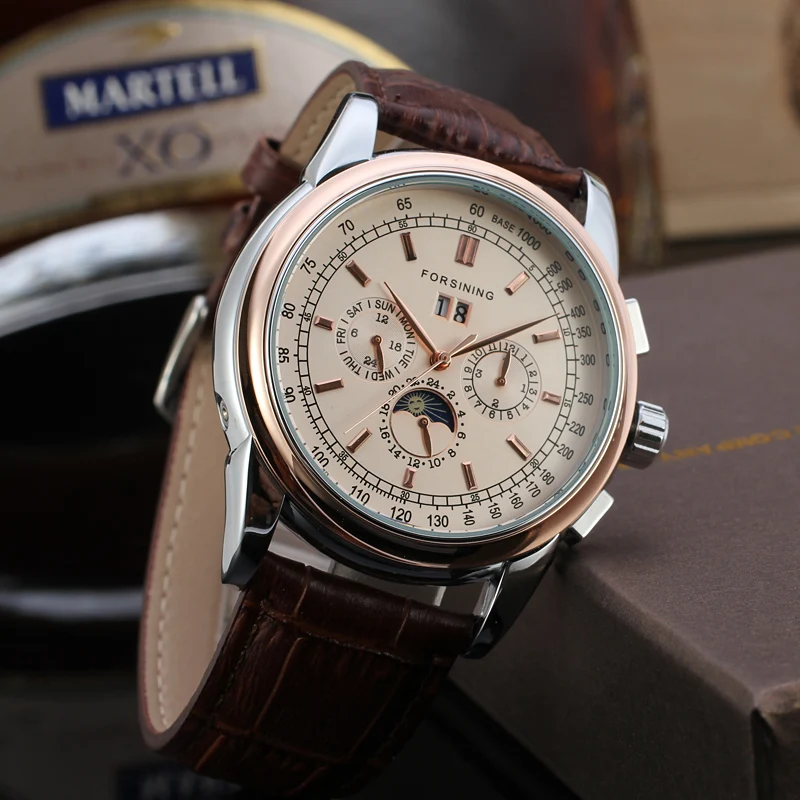
Thin watches also project a certain understated sophistication. In an era where oversized statements have dominated for years, the restraint of a slim timepiece communicates confidence and refined taste. The watch becomes less of an attention-seeking accessory and more of a thoughtful complement to one’s personal style.
The comfort analysis of thin watch cases reveals why many wearers develop a strong preference for slimmer profiles after experiencing them. The reduced profile means fewer impacts with desk edges or doorframes, less shifting on the wrist during movement, and generally less awareness of wearing a watch—until you need to check the time.
This combination of practical benefits helps explain why thin watches have transcended their traditional association with formal occasions. Today’s versatile thin timepieces serve equally well in boardrooms, creative studios, or weekend activities, adapting to the fluid lifestyle demands of contemporary watch enthusiasts.
Styling Guides: How to Wear Thin Watches Effectively
Thin watches offer remarkable versatility across various dress codes and personal styles. Their understated elegance allows them to complement rather than compete with your overall appearance. Here are effective approaches to styling these refined timepieces:
For formal settings:
– Pair a thin dress watch with a suit, ensuring the metal tone matches other accessories
– Allow approximately ¼ inch of the watch to be visible beneath your shirt cuff
– Consider leather straps in black or brown for traditional business environments
– Match leather watch straps to your belt and shoes for a coordinated appearance
For business casual environments:
– A thin watch on a mesh or fine link bracelet strikes the perfect balance
– Consider models with subtle color accents that complement your typical workwear
– Look for versatile case diameters (typically 36-40mm) that work with various sleeve styles
For casual settings:
– Experiment with NATO or textile straps to dress down an otherwise formal thin watch
– Consider titanium or steel cases that can withstand more active use
– Look for models with enhanced water resistance for worry-free everyday wear
The case diameter should generally correspond to wrist size, with smaller wrists (under 6.5 inches) typically better suited to cases under 38mm, which enhances the elegant appearance of a thin profile. Larger wrists can accommodate slightly larger diameters while still maintaining the sleek aesthetic.
When selecting complementary accessories, thin watches pair particularly well with:
– Minimal cufflinks without excessive height
– Slim wallets and cardholders that maintain a streamlined silhouette
– Narrow belts that reinforce the refined aesthetic
The elegance of ultra-thin formal watches becomes most apparent when the entire outfit maintains consistent proportions. A thin watch looks most harmonious when paired with properly fitted clothing rather than oversized pieces.
Maintenance Considerations for Ultra-Thin Timepieces
The refined nature of thin watches requires thoughtful care to ensure their longevity. While modern engineering has improved durability, these precision instruments still benefit from appropriate maintenance practices.
Service intervals deserve particular attention with ultra-thin watches. Their compact movements often operate with tighter tolerances than standard timepieces, making regular professional servicing especially important. Most manufacturers recommend:
- Complete service every 3-5 years
- More frequent inspection if the watch sees regular use
- Immediate attention if any performance changes are noticed
Water resistance presents unique considerations in thin watches. The reduced case depth often means:
– Lower water resistance ratings than sportier models
– Greater vulnerability at gasket and crown points
– Need for more frequent water resistance testing if worn near water
For daily handling, consider these protective measures:
– Store the watch in a dedicated watch box when not worn
– Avoid exposing thin watches to extreme temperature changes
– Use caution when placing the watch on hard surfaces
– Wind manual watches consistently but gently
– For thin automatics, consider a watch winder if not worn regularly
The manual wind watches category often includes many ultra-thin models since eliminating the automatic winding system allows for slimmer profiles. These watches require regular winding, ideally at the same time each day, to maintain optimal performance.
While these considerations might seem demanding, they’re simply part of appreciating the craftsmanship that goes into these exceptional timepieces. With appropriate care, a quality thin watch will provide decades of reliable service while maintaining its elegant profile.
Future Innovations: What’s Next in Thin Watch Development?
The pursuit of thinner, more refined watch profiles continues to drive innovation throughout the watchmaking industry. Several emerging trends point toward exciting future developments in this specialized category.
Advanced manufacturing techniques, particularly 3D printing of metal components, may soon enable even more complex component shapes that maintain strength while reducing thickness. These technologies allow for organic structures that would be impossible to create using traditional machining methods, potentially revolutionizing movement architecture.
Material science continues to expand possibilities for thin watch construction. Research into crystalline metal alloys, carbon nanotube composites, and advanced ceramics suggests future watches may be constructed from materials that offer superior strength at even thinner dimensions. These materials might allow for cases under 5mm while maintaining practical durability.
Movement innovations are likely to focus on reducing the number of components while maintaining accuracy. The integration of electronic regulation with traditional mechanical power delivery represents one promising direction, potentially offering the emotional appeal of mechanical watches with the precision and thinness advantages of quartz technology.
Sustainability considerations are increasingly influencing watch design across all categories. For thin watches, this might manifest as more efficiently manufactured components, longer service intervals through improved lubricants, and more environmentally responsible material choices. The challenge will be implementing these changes without compromising the essential thinness.
The evolution of horological elegance suggests that future thin watches will likely continue balancing technical innovation with aesthetic refinement. Rather than pursuing absolute thinness records that compromise wearability, the most successful developments will likely enhance the practical advantages that make thin watches so appealing in daily life.
Can Thin Watches Be Durable? Addressing Common Concerns
A persistent misconception about thin watches is that their slender profiles necessarily make them fragile. While there’s some truth to the idea that extreme thinness can involve compromises, modern engineering has significantly improved the durability of slim timepieces.
Are thin watches inherently delicate?
Not necessarily. Contemporary thin watches benefit from advanced materials and structural engineering that can provide surprising resilience despite minimal thickness. While ultra-record-breaking thin watches (under 4mm total thickness) may indeed require careful handling, most commercially available thin watches (6-8mm) are designed for regular use.
How do thin watches protect against impacts?
Modern thin watches often incorporate sophisticated shock protection systems, including:
– Elastic mounting for the balance staff
– Specially designed movement holders that absorb vibration
– Strategic reinforcement at vulnerable points
– Flexible gaskets that absorb minor impacts
Do thin mechanical movements require more frequent repairs?
Not inherently, though their compact dimensions can make servicing more complex. Quality thin movements from established manufacturers are designed with longevity in mind and often feature:
– Jewel bearings at all critical wear points
– Specialized lubricants formulated for tight tolerances
– Careful component alignment to minimize stress
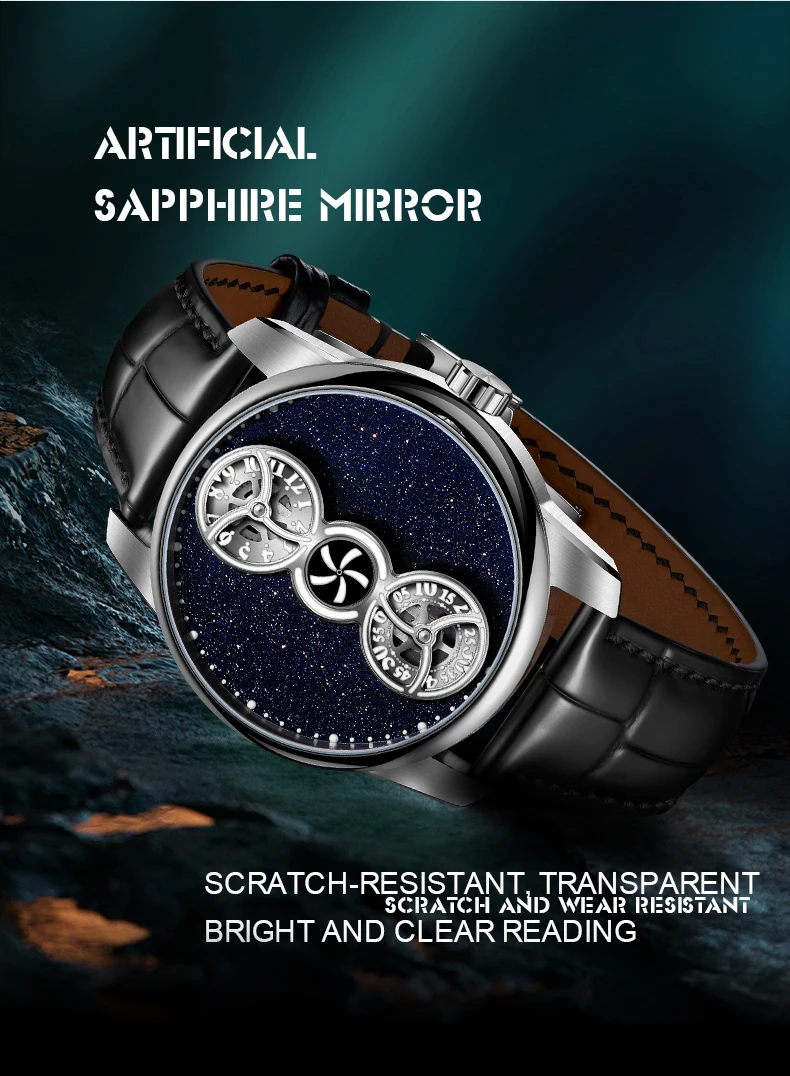
How does water resistance compare between thin and standard watches?
This represents one area where thin watches do typically make compromises. The reduced case depth limits space for robust gaskets and threaded casebacks. However, many modern thin watches still achieve:
– Splash resistance for everyday situations
– Resistance to humidity and light rain
– Improved sealing technology compared to vintage thin watches
The definitive watch case thickness comparison shows that durability isn’t directly proportional to thickness. Well-designed watches in the 7-9mm range can offer excellent reliability for everyday wear while maintaining an elegant profile.
Thin Watches Versus Smartwatches: Complementary or Competing?
The rise of smartwatches has created an interesting contrast with traditional thin watches, highlighting fundamental differences in design philosophy and purpose. While seemingly at odds, these two categories often serve complementary roles in modern wardrobes.
Traditional thin watches prioritize elegance through reduction—removing everything unnecessary until only the essential elements remain. Their value lies in their permanence and focused functionality. Smartwatches, conversely, embrace addition—continually incorporating new features and capabilities, with thickness often increasing to accommodate batteries and sensors.
Some smartwatch manufacturers have recognized the appeal of slimmer profiles and have begun developing thinner models. These typically make compromises in battery life or functionality to achieve more wearable dimensions. However, even the thinnest smartwatches remain substantially thicker than ultra-thin mechanical timepieces due to their electronic components.
What’s particularly interesting is how consumers are navigating these options. Rather than choosing exclusively one category, many enthusiasts maintain both in their collections, wearing:
– Traditional thin watches for formal occasions and social events
– Smartwatches for exercise, outdoor activities, or tech-focused workdays
– Each type for different aspects of their lifestyle
The cultural significance of choosing a traditional thin watch in the smartwatch era makes a distinct statement. It suggests an appreciation for craftsmanship, heritage, and intentional disconnection from constant notifications. The timeless nature of mechanical manual wind dress watches provides a counterpoint to the planned obsolescence of digital devices.
Rather than seeing these categories as competitors, they might better be understood as serving different needs within our complex relationship with time and technology. The thin mechanical watch celebrates time’s passage through generations, while the smartwatch emphasizes maximizing each minute of the present day.

